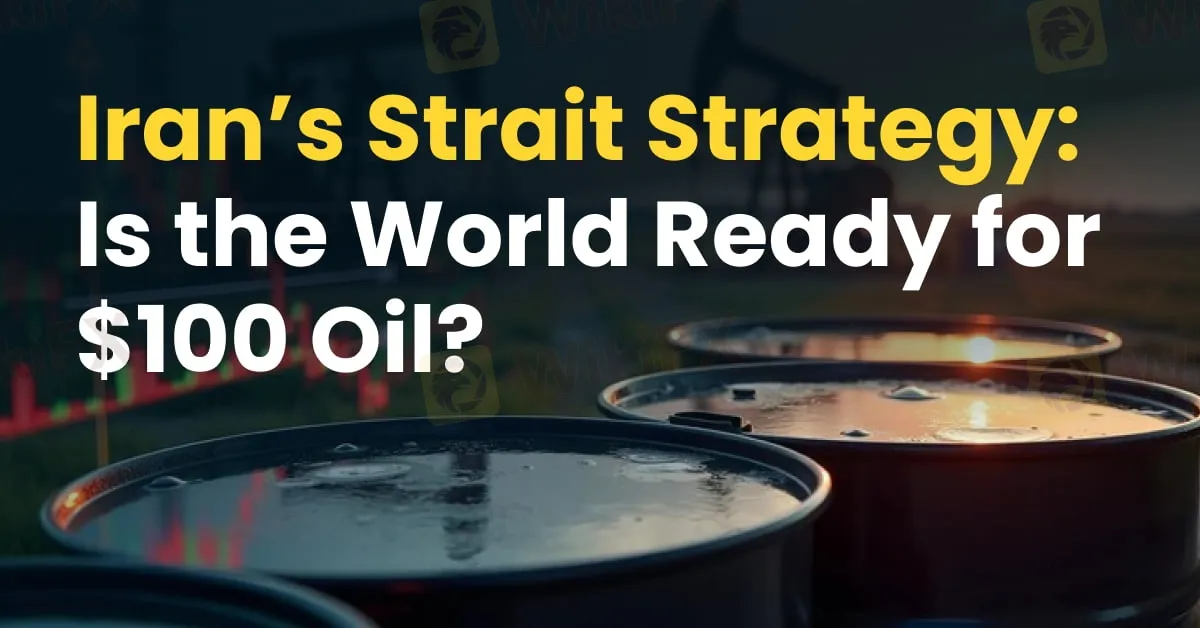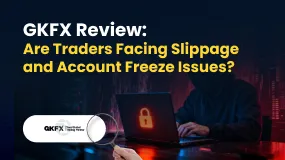简体中文
繁體中文
English
Pусский
日本語
ภาษาไทย
Tiếng Việt
Bahasa Indonesia
Español
हिन्दी
Filippiiniläinen
Français
Deutsch
Português
Türkçe
한국어
العربية
Iran’s Strait Strategy: Is the World Ready for $100 Oil?
Abstract:Tensions in the Middle East are rising quickly, and global oil markets are already feeling the pressure. Since Iran and Israel entered open conflict, oil prices have jumped from around $60 to nearly $80 per barrel. Now, with the United States joining the fight and launching strikes against Iran, the situation has become even more serious. Iran’s threat to seal off the Strait of Hormuz could ignite a global energy meltdown, spike oil prices beyond $100, and unleash economic chaos across the world.

Tensions in the Middle East are rising quickly, and global oil markets are already feeling the pressure. Since Iran and Israel entered open conflict, oil prices have jumped from around $60 to nearly $80 per barrel. Now, with the United States joining the fight and launching strikes against Iran, the situation has become even more serious. In response, Iran has threatened to shut down the Strait of Hormuz, which is one of the worlds most important oil shipping routes.
The Strait of Hormuz is a narrow waterway between Iran and Oman. It connects the Persian Gulf to the rest of the world, and about one-third of the worlds seaborne oil trade passes through it. If Iran follows through and blocks the strait, global oil supply could drop sharply. That could easily send oil prices above $100 per barrel.

Closing the strait would also hurt Iran, as oil exports are a key part of its economy. Still, Irans leaders seem ready to take that risk. Since they cannot hit the United States directly, they are targeting something just as important: its economy. Rising oil prices could bring back global inflation and force the U.S. central bank to delay interest rate cuts or even raise rates again. This would hurt stock markets, increase borrowing costs, and limit how much the U.S. government can spend.
Of course, this is not a one-sided move. Blocking the Strait of Hormuz would also damage Irans own economy, especially during wartime when it needs money the most. But Iran may see the short-term pain as worth it if it can create trouble for its enemies.
Other countries in the region would also suffer. Saudi Arabia, Iraq, and Kuwait send most of their oil through the Strait of Hormuz. The United Arab Emirates has a small pipeline that can help, but it‘s not enough. Qatar, the world’s biggest exporter of liquefied natural gas, also relies heavily on the strait. If it‘s closed, these countries may watch oil prices rise, but won’t be able to sell their oil.
On the other hand, Russia could benefit. Still under pressure from the war in Ukraine, Russia has been selling oil through pipelines and alternative routes. If prices go up, Russia could earn more money and ease some of its financial problems.
In the end, this conflict may not have a clear winner. Iran likely cannot win in a direct fight against the combined forces of the U.S. and Israel. But that may not be its goal. Instead, Iran may be trying to drag out the conflict, shake financial markets, and raise costs for its opponents. The longer it lasts, the more pressure it puts on Israels budget and the U.S. economy.
This is a risky game with high stakes. And once again, it shows how a small stretch of water can affect the entire world economy.

Disclaimer:
The views in this article only represent the author's personal views, and do not constitute investment advice on this platform. This platform does not guarantee the accuracy, completeness and timeliness of the information in the article, and will not be liable for any loss caused by the use of or reliance on the information in the article.
Read more

Close Up With WikiFX —— Take A Close Look At Amillex
With the rapid growth of global multi-asset investment markets, the differences among regional forex markets have become increasingly significant. As a forex broker information service platform operating in more than 180 countries and regions, WikiFX is dedicated to helping investors in every market identify reliable brokers. Therefore, we have launched an exclusive interview series —— "Close Up With WikiFX", offering in-depth conversations with local brokers. This series aims to dive deep into frontline markets and provide first-hand information, helping investors gain a clearer and more comprehensive understanding of quality brokers.

Seacrest Markets Exposed: Are You Facing Payout Denials and Spread Issues with This Prop Firm?
Seacrest Markets has garnered wrath from traders owing to a variety of reasons, including payout denials for traders winning trading challenges, high slippage causing losses, the lack of response from the customer support official to address withdrawal issues, and more. Irritated by these trading inefficiencies, a lot of traders have given a negative review of Seacrest Markets prop firm. In this article, we have shared some of them. Take a look!

GKFX Review: Are Traders Facing Slippage and Account Freeze Issues?
Witnessing capital losses despite tall investment return assurances by GKFX officials? Do these officials sound too difficult for you to judge, whether they offer real or fake advice? Do you encounter slippage issues causing a profit reduction on the GKFX login? Is account freezing usual at GKFX? Does the United Kingdom-based forex broker prevent you from accessing withdrawals? You are not alone! In this GKFX review guide, we have shared the complaints. Take a look!

Is Seaprimecapitals Regulated? A Complete Look at Its Safety and How It Works
The straightforward answer to this important question is no. Seaprimecapitals works as a broker without proper regulation. This fact is the most important thing any trader needs to know, because it creates serious risks for your capital and how safely the company operates. While this broker offers some good features, like the popular MetaTrader 5 platform and a low starting deposit, these benefits cannot make up for the major risks that come from having no real financial supervision. This article will give you a detailed, fact-based look at Seaprimecapitals regulation, what the company claims to do, the services it provides, and the clear differences between official information and user reviews. Our purpose is to give you the information you need to make a smart decision about the risks and benefits of working with this company.
WikiFX Broker
Latest News
Simulated Trading Competition Experience Sharing
WinproFx Regulation: A Complete Guide to Its Licensing and Safety for Traders
Interactive Brokers Expands Access to Taipei Exchange
Axi Review: A Data-Driven Analysis for Experienced Traders
INZO Regulation and Risk Assessment: A Data-Driven Analysis for Traders
Cleveland Fed's Hammack supports keeping rates around current 'barely restrictive' level
Delayed September report shows U.S. added 119,000 jobs, more than expected; unemployment rate at 4.4%
The CMIA Capital Partners Scam That Cost a Remisier Almost Half a Million
eToro Cash ISA Launch Shakes UK Savings Market
Is Seaprimecapitals Regulated? A Complete Look at Its Safety and How It Works
Currency Calculator



